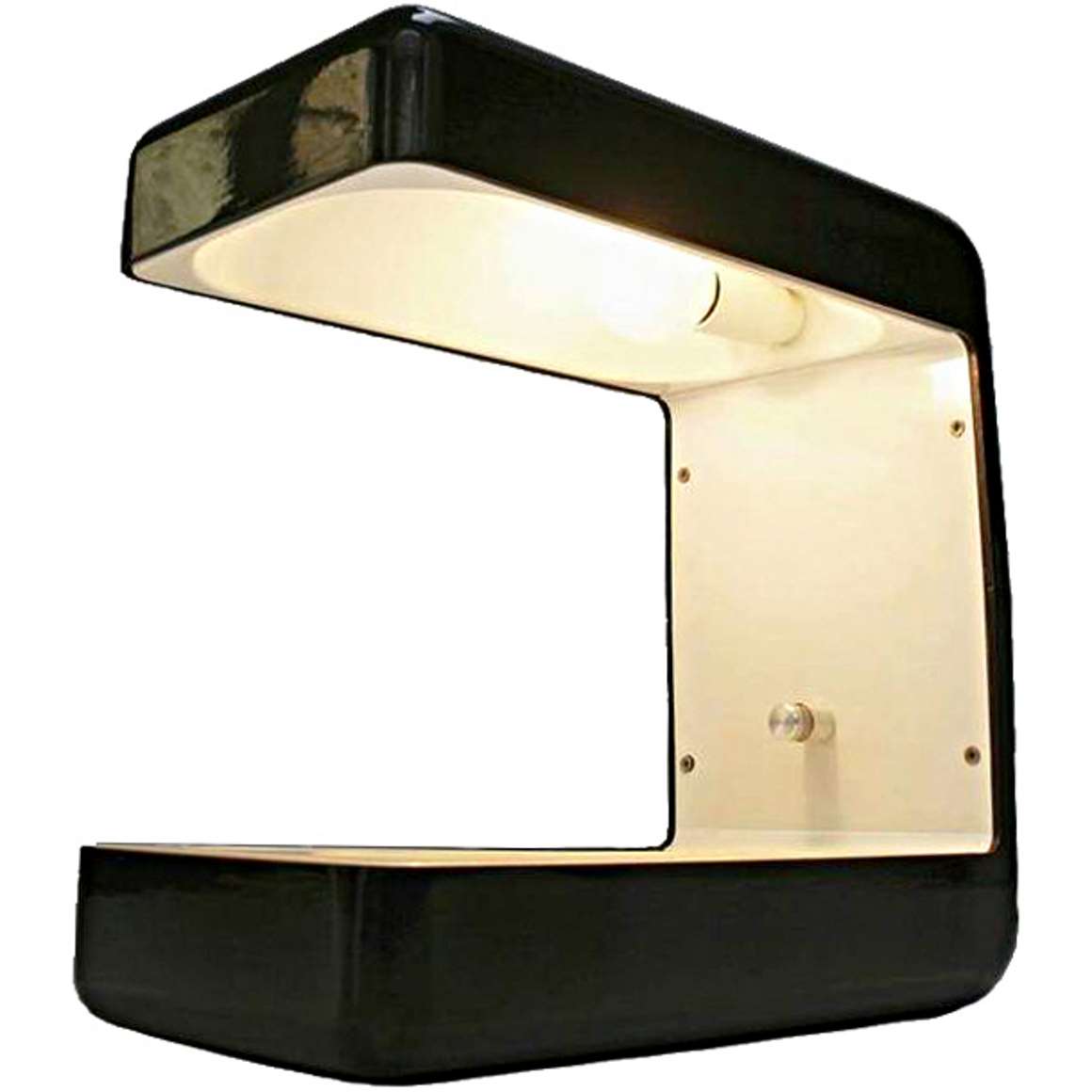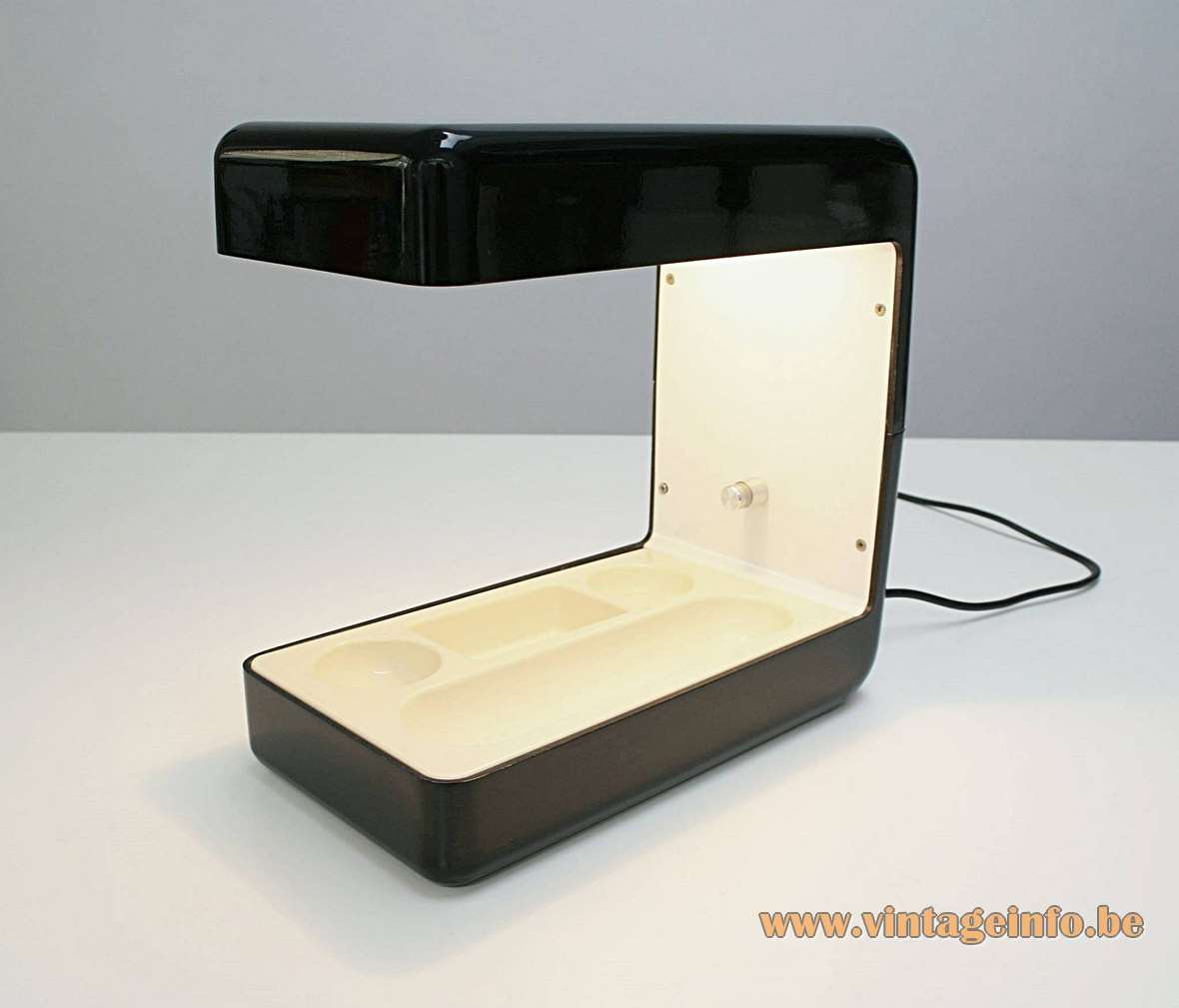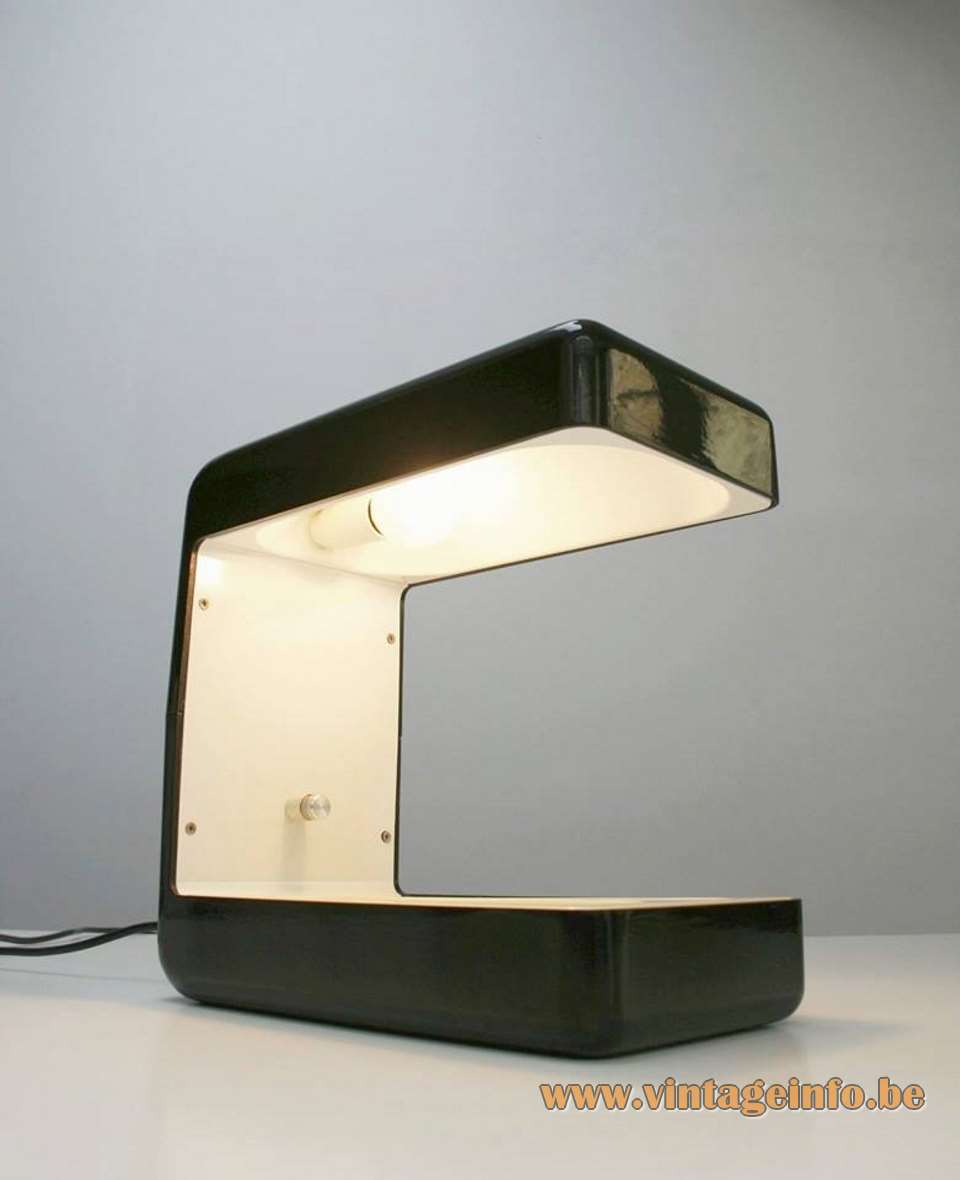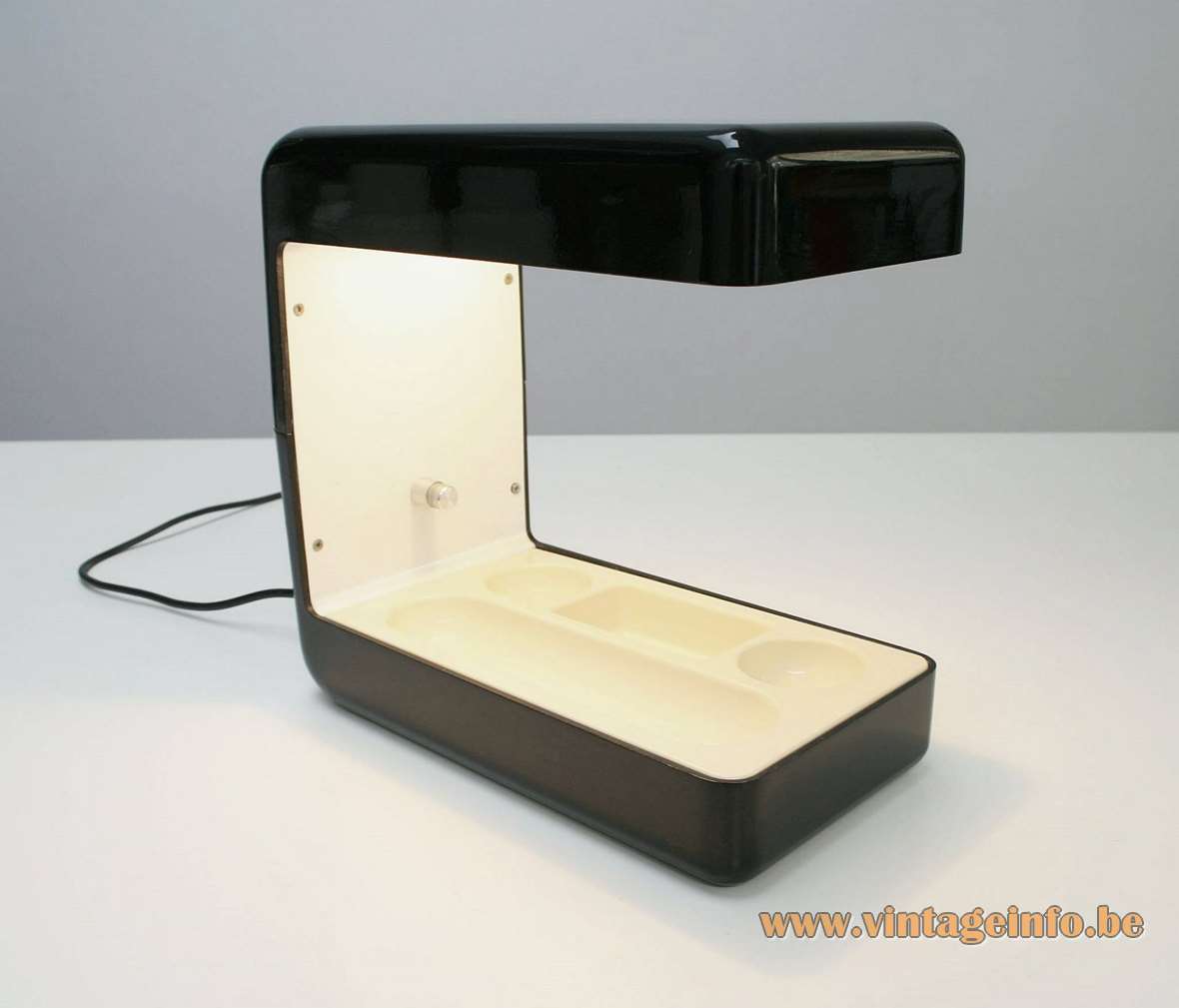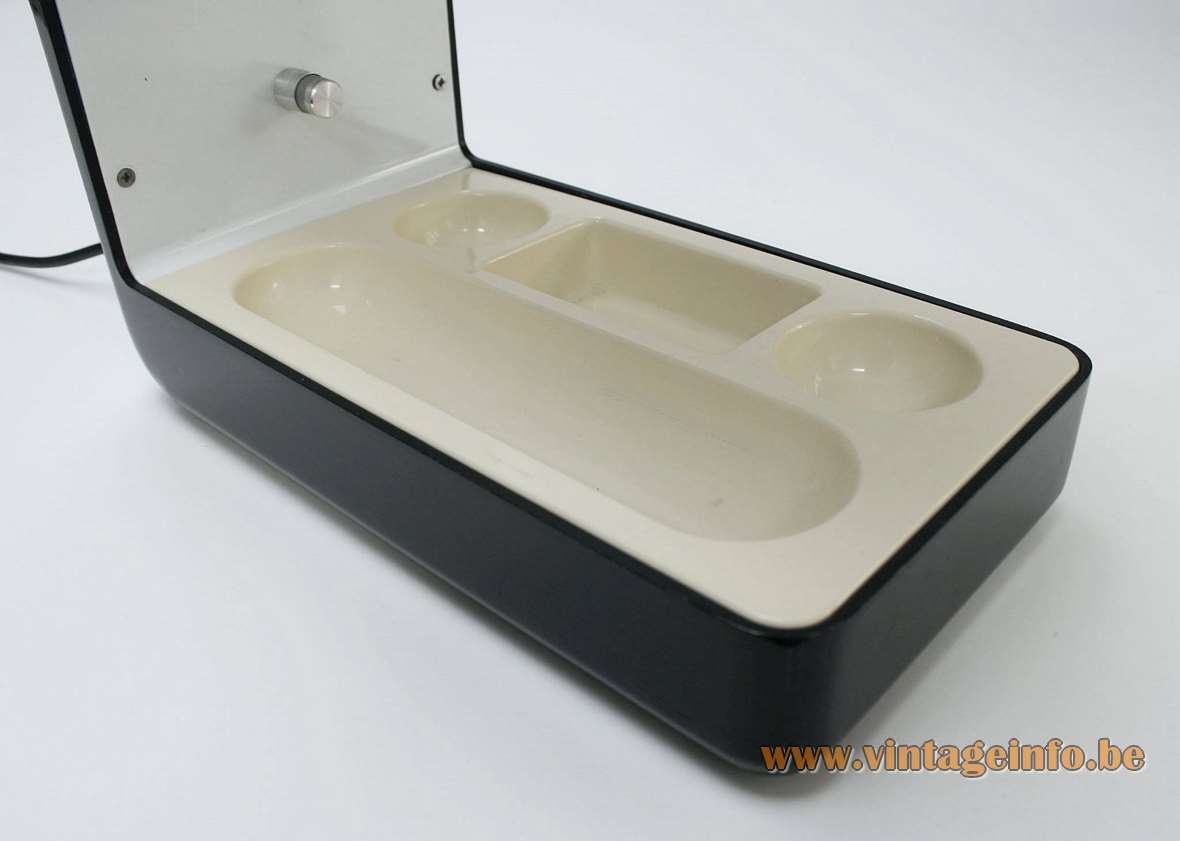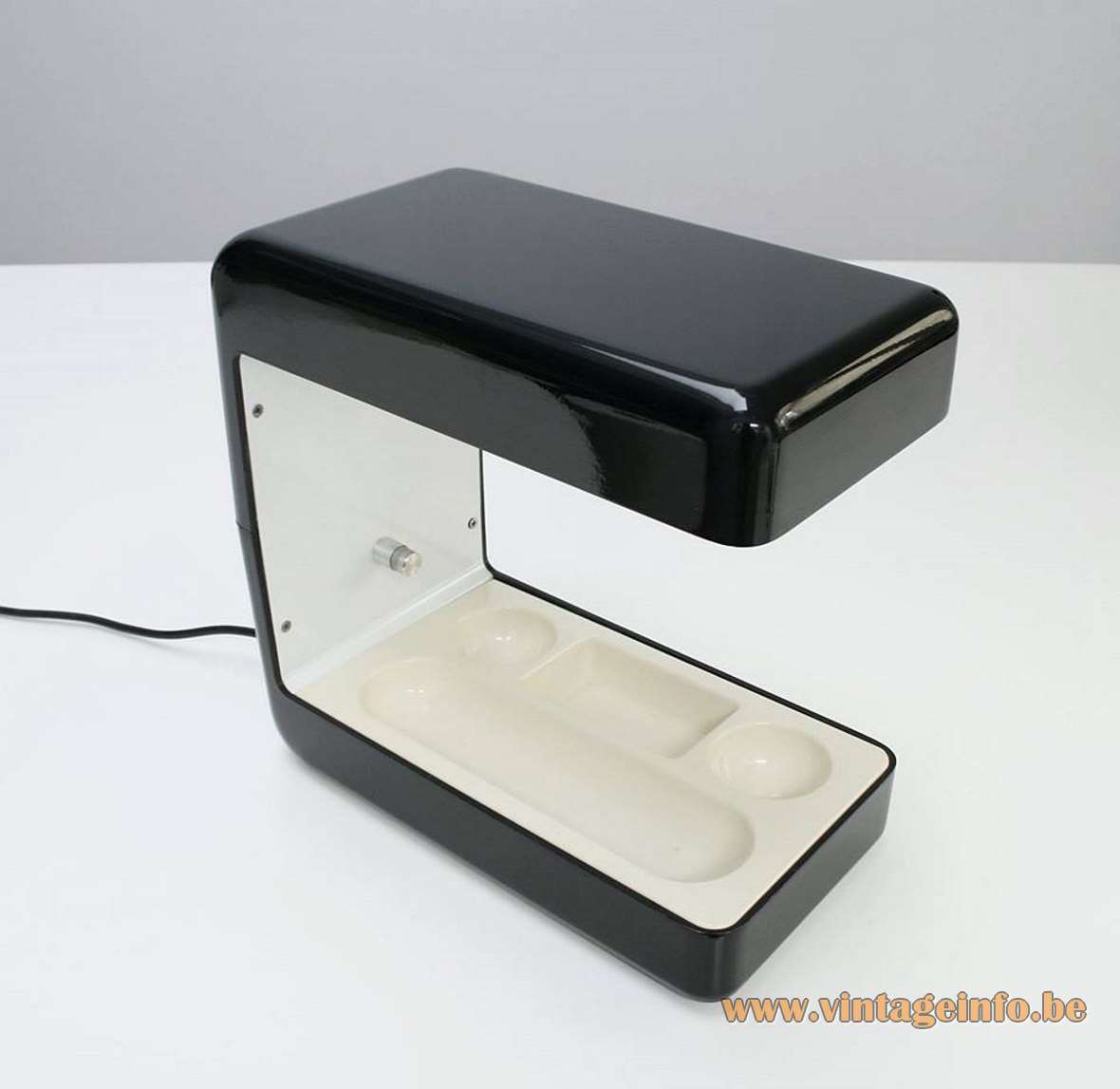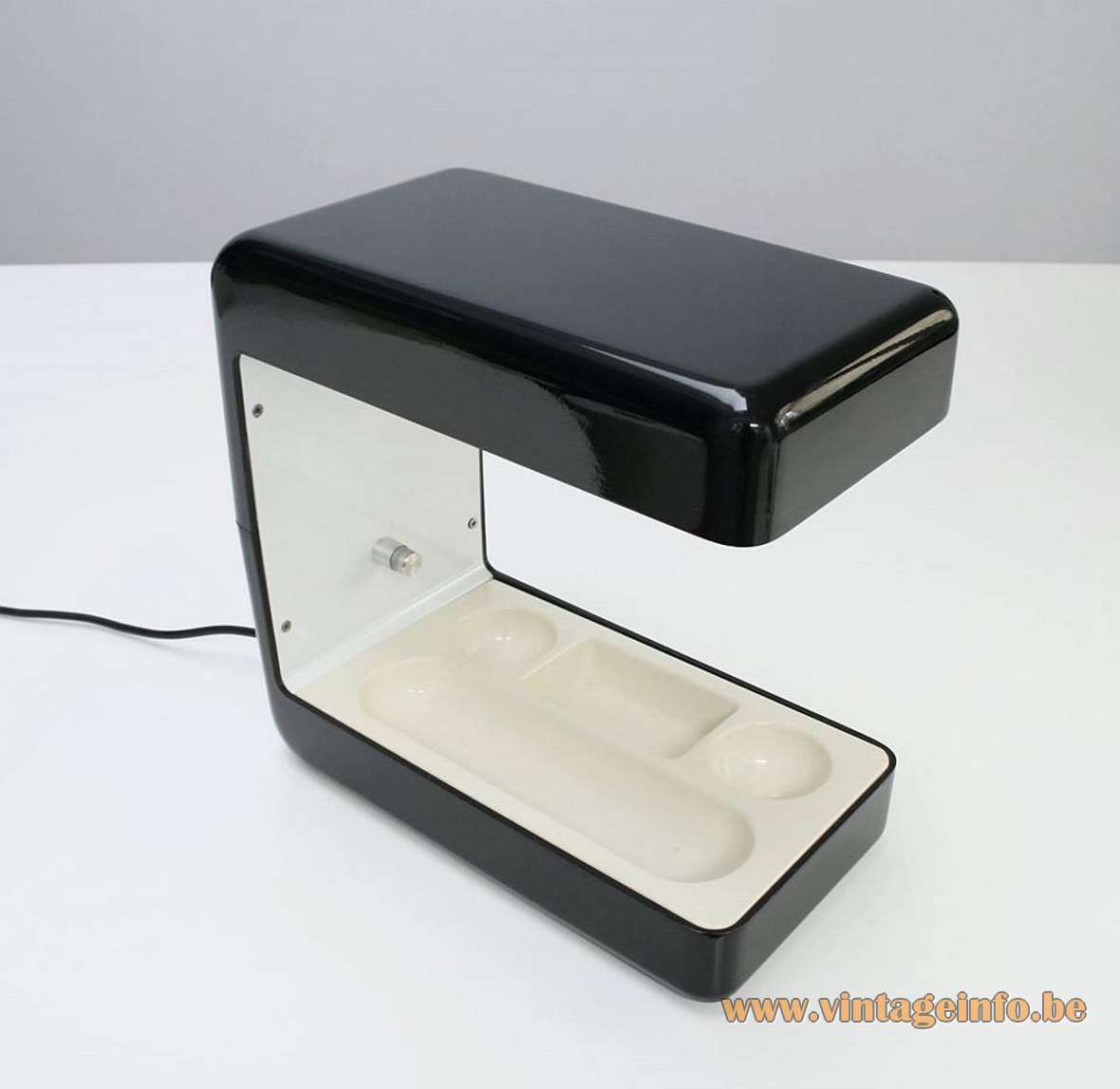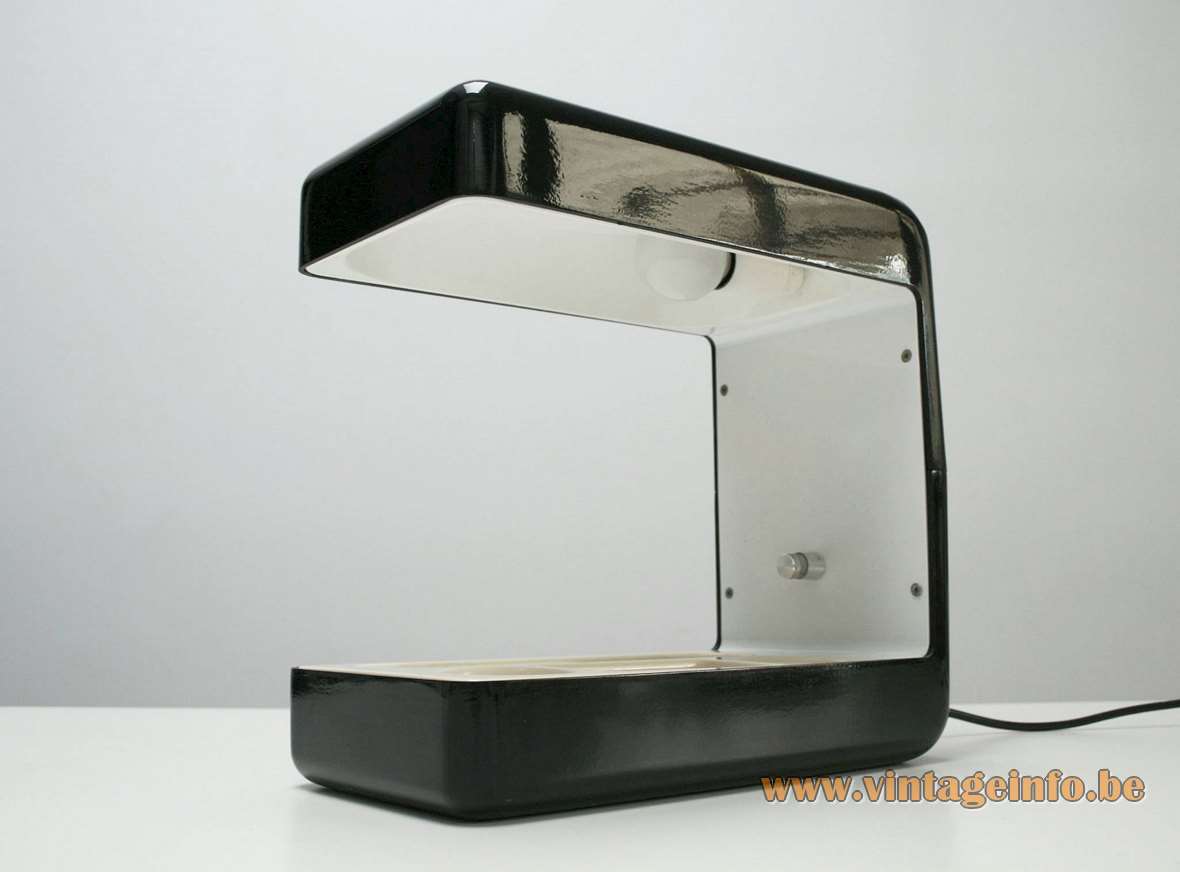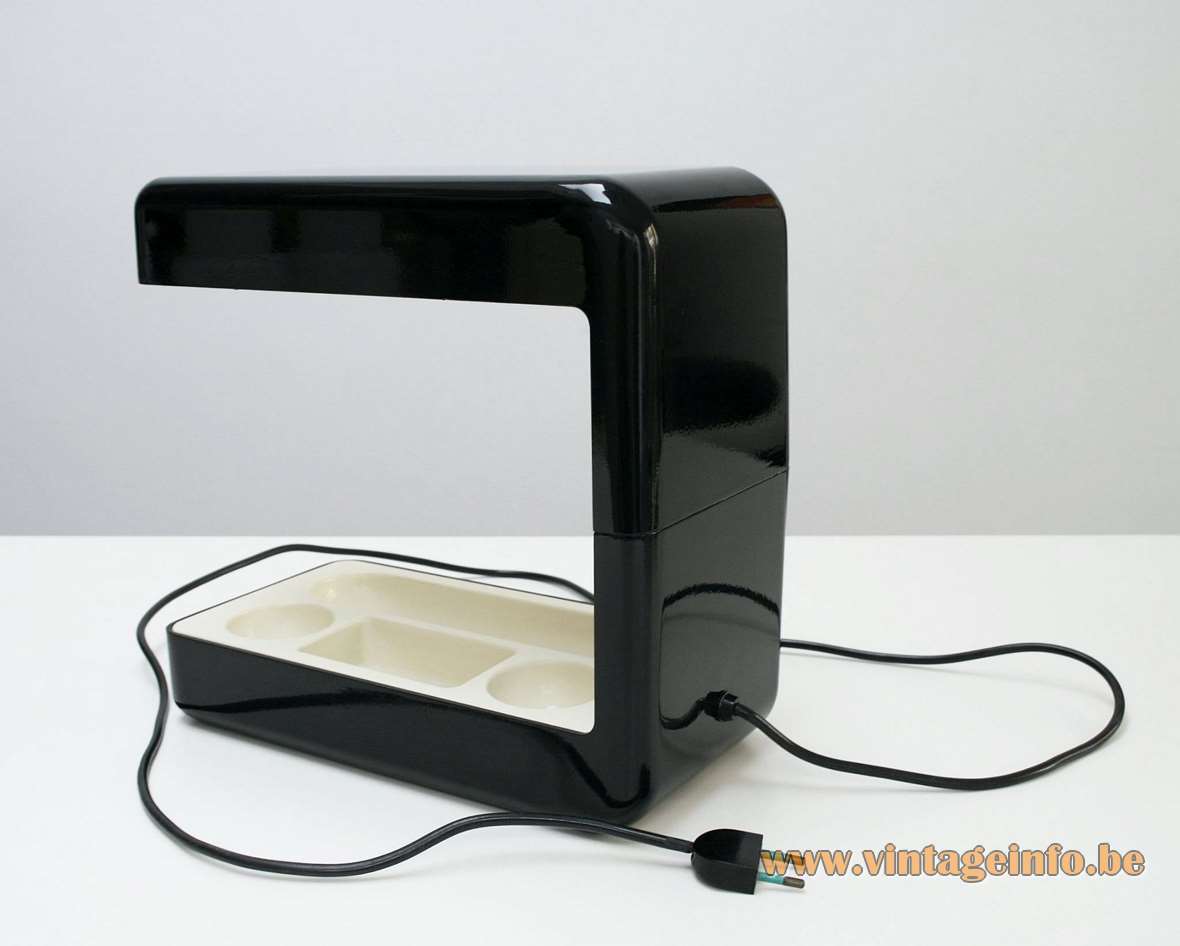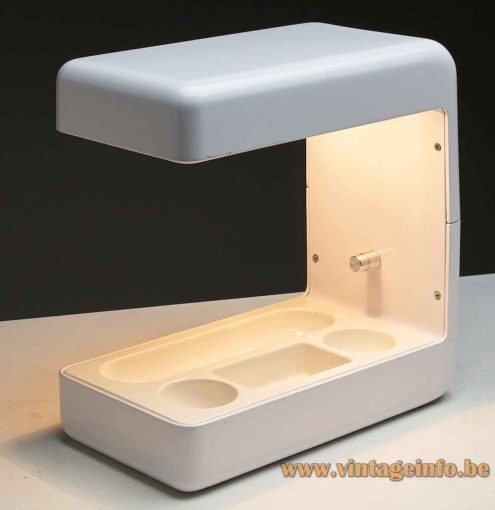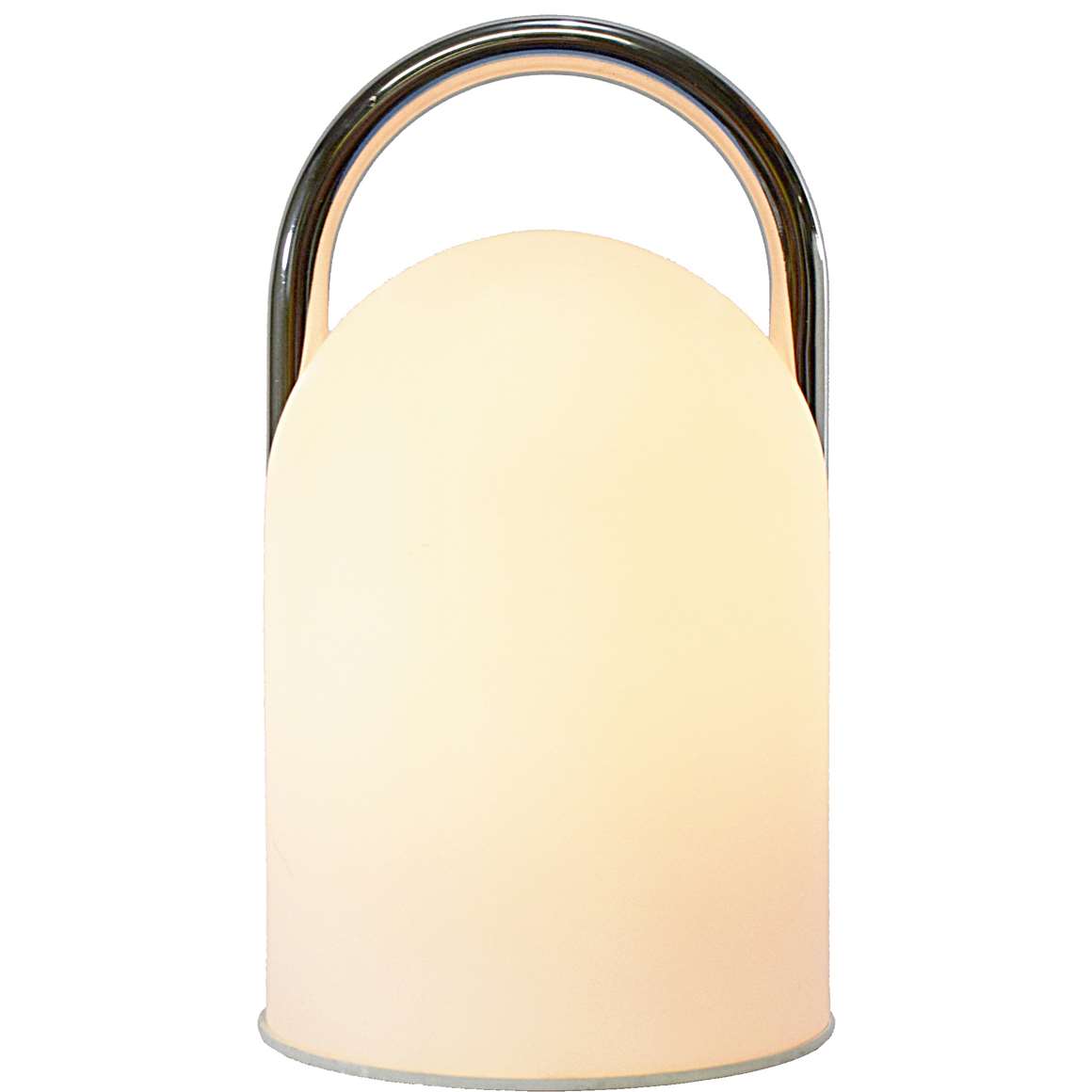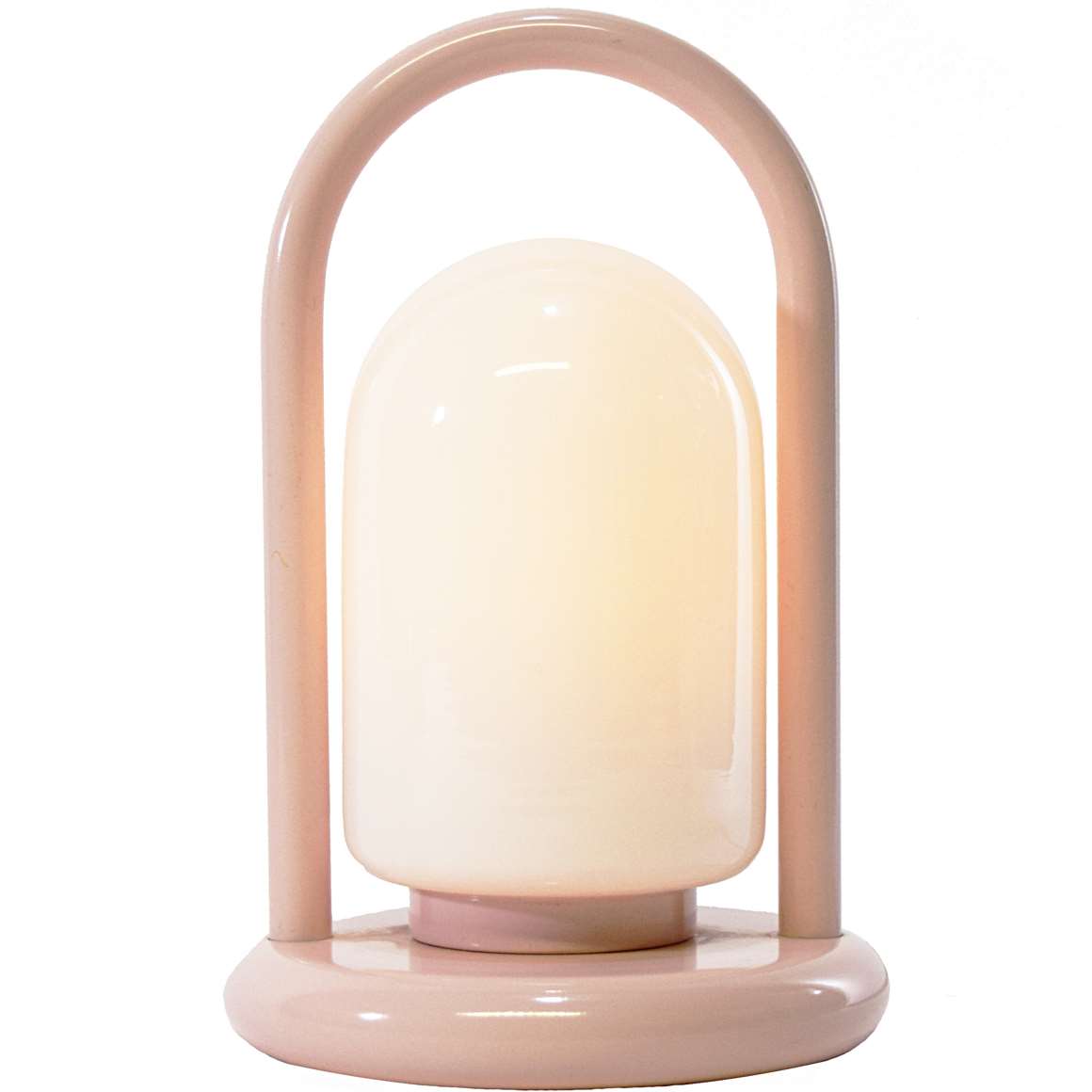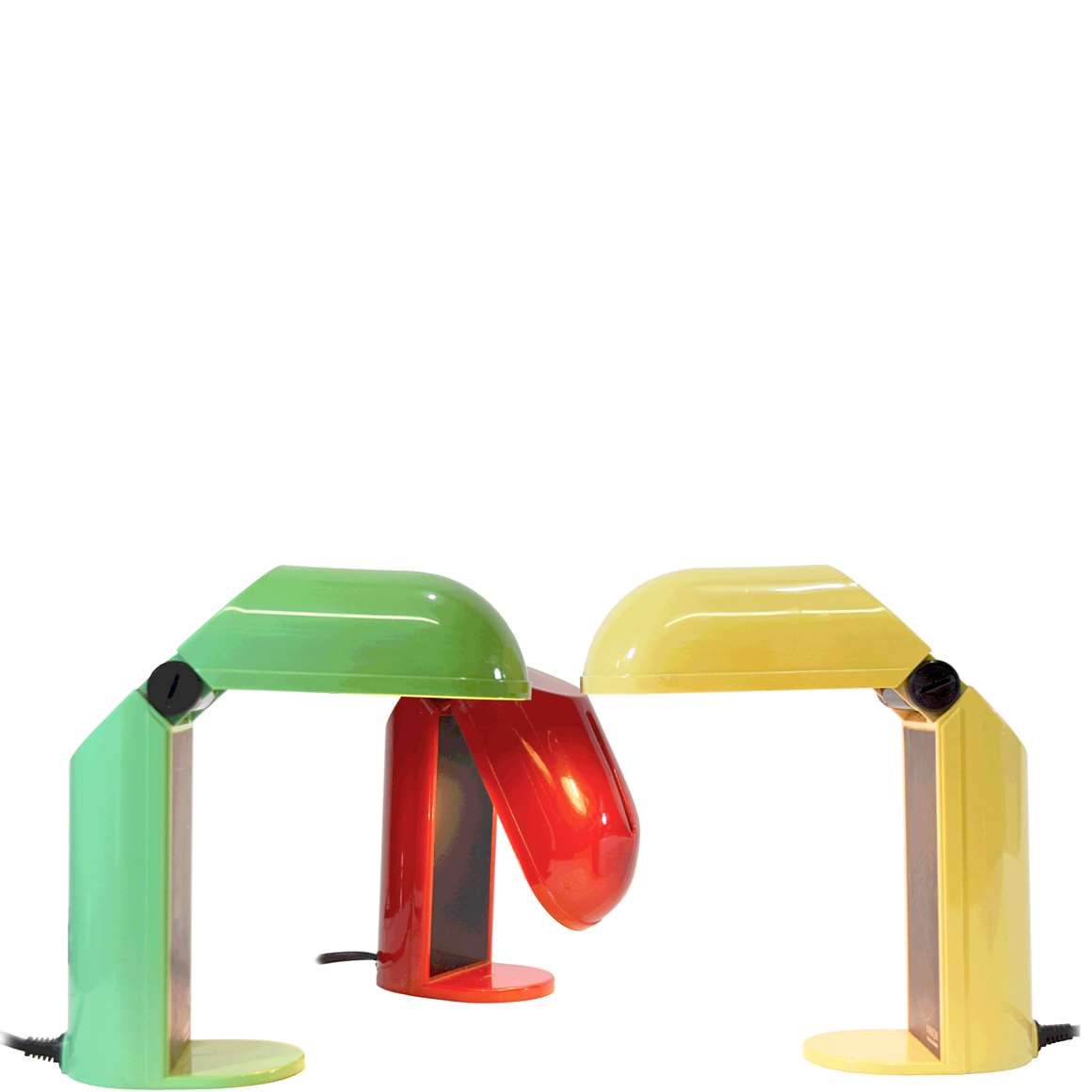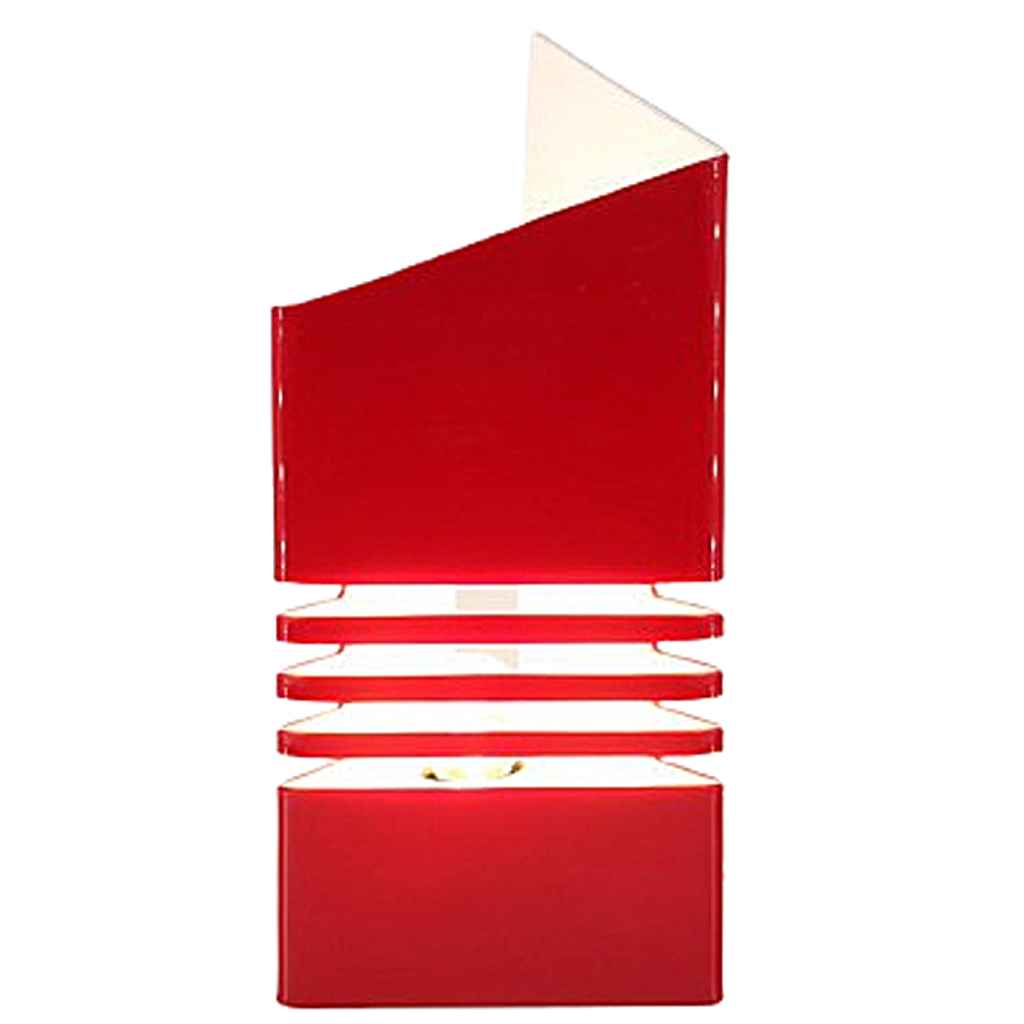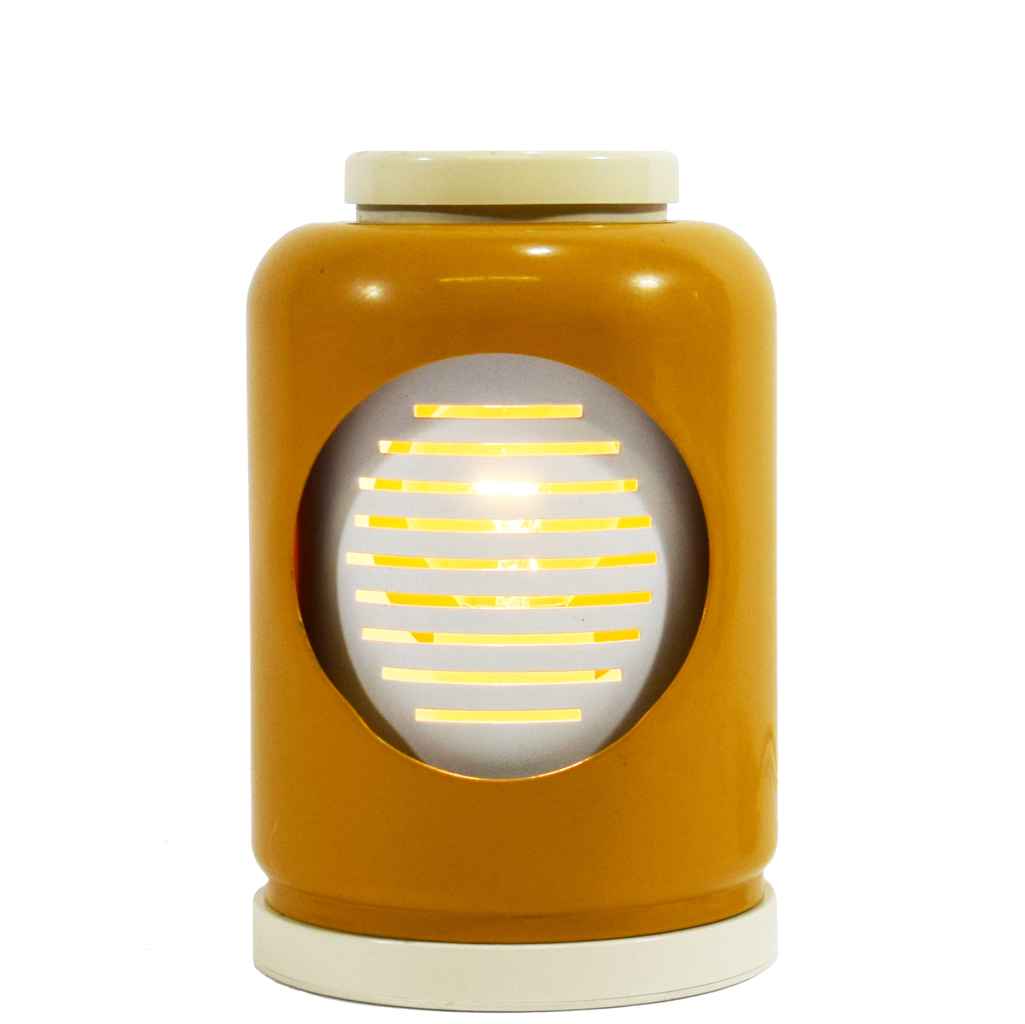Giotto Stoppino Isos Desk Lamp – White Version
Links (external links open in a new window)
Kundalini website (KDLN)
Giotto Stoppino biography – Wikipedia (in Italian)
Giotto Stoppino in the Museum of Modern Art, MoMA in New York
Vintageinfo
Many thanks to vintagestique for the pictures.
Many thanks to Max from AfterMidnight for the photo of the white version.
Giotto Stoppino Isos Desk Lamp
Materials: Black and white enamelled aluminium U shaped light. Painted white on the inside. White-vanilla internal tray made of ABS plastic. White painted Bakelite E14 socket.
Height: 28 cm / 11.02”
Width: 28 cm / 11.02”
Depth: 11 cm / 5.91”
Electricity: 1 bulb E14, 1 x 40 watt maximum, 110 – 220 volt.
Any type of light bulb can be used, not a specific one preferred.
Period: 1970s – Mid-Century Modern.
Designer: Giotto Stoppino in 1972.
Manufacturer: Tronconi s.r.l. via Bernini 5/7, 20094 Corsico, Milano, Italy.
Other versions: This Giotto Stoppino Isos desk lamp exists in red, white, burgundy/maroon, grey, chrome, black…
Giotto Stoppino
Giotto Stoppino was born in Vigevano, Italy in 1926. He was an architect and designer who designed many beautiful and sought after items. For example his famous Equilibrium lamp for Arteluce, model 537 in 1967, as you can see below.
He designed the Equilibrium lamp together with his partners Vittorio Gregotti and Lodovico Meneghetti from their company “Architetti Associati ” (Associated Architects) that existed from 1953 until 1968. Since 1968 Giotto Stoppino became an independent artist. He designed for many companies.
Giotto Stoppino passed away in Milan, Italy in 2011.
Tronconi
Tronconi was founded in 1956 by Enrico Tronconi in Milan with its first headquarters at via Bernini 5/7, Corsico. Later the company moved to Via XX Settembre 154, Conegliano (TV).. Initially producing lamps in a more traditional style, Tronconi quickly embraced the new design impulses of the 1970s. The brand became known for its experimental approach, balancing technological innovation with strong aesthetics.
During the 1970s and 1980s Tronconi introduced some of its most famous creations. Tronconi designed Bambu’ floor lamp (1971), followed by the Il Personaggi lamp series (1972) by Federico Rezzonico and Lorenzo Carmellini. Silvio Coppola created the sculptural Mezzaluna Don table lamp (1974), while Cini Boeri designed the iconic Abat-Jour lamp series (1975). In the same year Ettore Arcelli and Cesare Pattarino presented the Bull floor and table lamp, and Giotto Stoppino followed with the Drop table lamp and floor lamp (1976). In the 1980s, Romolo Lanciani designed the Tender table and floor lamps (1980), Raul Barbieri created the Bulbone table lamp (1983), and later returned with the Suite table and floor lamp (1998). These lamps became symbols of Italian modern lighting design.
Over the years, Tronconi collaborated with many important Italian and international designers, keeping the catalog dynamic and innovative. In 2006 the historic brand was acquired by Kundalini, a Milan-based company founded in 1996 and specialized in contemporary lighting. Kundalini continued developing products in the style and spirit of Tronconi, securing its legacy within Italian design history. Tronconi has reissued a series of design icons.
Bambu’ – Bamboo
An attribution that often appears is that Enrico Tronconi designed the Bambu’ floor lamp for Vistosi. I have found no evidence to support this claim. On the contrary, the Bambu’ floor lamp appears in a Tronconi catalogue from the 1970s without a designer’s name, and it does not appear in any Vistosi catalogue. At best, Vistosi may have produced the glass components, but there is no documentation to confirm this. In that same Tronconi catalogue, all lamps with external designers are credited by name, while those developed by the internal design team are left unsigned. The Bambu’ (often spelled “Bamboo ”) clearly falls into the latter category.
Designers
Giotto Stoppino, Bruno Gecchelin, Lorenzo Carmellini, Ettore Arcelli, Cesare Pattarino, Arik Levy, Silvio Coppola, Christophe Pillet, Cini Boeri, Raul Barbieri, Gabriella Montaguti, Giovanni Crosera, Giorgio Marianelli, Jean-Marie Massaud, Marco Sousa Santos, Mario Mazzer, Michael Sodeau, Palomba Serafini, Patricia Urquiola, Patrick Norguet, Romolo Lanciani, Theo Williams, and Tom Dixon.
